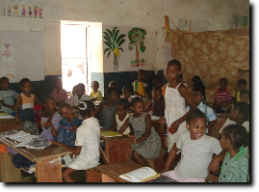Giovanna Spantigati
Mit in schools
Educational Strategies
MI IS A WAY AND NOT AN END IN ITSELF. HOW IT IS APPLIED, PURPOSES AND INTENTS.
Mit is not an end in itself. When developed in the early 80s, multiple intelligences theory was a contribution to psychology and not a contribution to education. Educators and teachers decided to use the MI. MI can be applied at all levels at school.
Each intelligence can be cultivated. At the same time, it is recognized that, for a variety of reasons, students exhibit different profiles of intelligence.
It is possible to adopt an MI approach that takes as its goal the optimal development of areas of student strength, or to identify areas of weakness and to devote special resources to the bolstering of less developed intelligences.
Teachers of the gifted and teachers of students with learning deficits were attracted to the theory. This because they are familiar with students who exhibit unusual profiles of strengths and deficits. The purpose is always to foster the intelligences.

Without the development of intelligence man CANNOT PARTICIPATE IN SOCIAL LIFE IN A CONSCIOUS AND RESPONSIBLE MANNER. THE DEVELOPMENT OF INTELLIGENCE MEANS IN ITSELF THE DEVELOPMENT OF HUMAN CAPACITIES.
Gardner concept of intelligences is an outgrowth of accumulating knowledge about the human brain and about human cultures. We ought to examine the intelligence directly rather than through the lens of linguistic or logical intelligence (as ordinary paper-and-pencil tests do). Thus, if one wants to look at spatial intelligence, one should allow an individual to explore a terrain for a while and see whether she can find her way around it reliably. If one wants to examine musical intelligence, one should expose an individual to a new melody in a reasonably familiar idiom and see how readily the person can learn to sing it, recognize it, transform it, and the like. To assess an individual intelligence the best thing is to do it in a comfortable setting, with materials that are familiar to that individual.
Intelligence is a BIOLOGICAN AND PSYCHOLOGICAL POTENTIAL; that potential is capable of being realized to a greater o lesser extent as a consequence of the EXPERIENTIAL, CULTURAL AND MOTIVATIONAL factors that affect a person.
Once the decision has been made to dedicate time to particular items, it then becomes possible to approach those topics or notions in a variety of ways. Not necessarily eight ways, but in a number of ways that prove pedagogically appropriate for the topic at hand. When a teacher represents knowledge in a number of different ways, a student can discover that he himself is capable of more than a single representation of a specified content.
Personalize education: we are not all the same, we do not all have the same kinds of minds; education works more effectively if these differences are taken into account.
QI asked: Is the person intelligent? On the contrary MI asks: in WHICH WAYS is the person intelligent? MI is of help to understand and face cognitive differences at school.
Intelligences often manifest themselves in different ways in different cultures; for example, in one culture spatial intelligence develops as expert navigation skill, whereas in another culture it tends to grow as artistic ability. All children have all intelligences and the differences among individual intellectual profiles are the result of personal and local factors as well as cultural influences.
Multiple intelligences in class:
Teachers have had at least one student who surprised them with the way the student solved a particular problem or demonstrated that he or she understood something. It may have been a child who solved a math problem correctly but differently from the way it was taught. It could have been an adolescent who played Romeo and Juliet with surprising insight into Romeo's character. Why were these students surprising? There may be two reasons. First, that there were things about these children their teachers did not know, things about the ways their minds worked. And second that the teacher themselves may not have ever thought about the problem in that way. Our sensitivity to the diverse ways in which children think, solve problems, and express themselves is often limited both by our notions of intelligence and our intellectual preferences. Intentionally or not, teachers design their classrooms, curriculum, instruction and assessment, to reflect their ideas about intelligence and their own ways of making sense of the world. Based on long and careful observation, especially of children who do not seem to understand easily what may seem obvious to others, many teachers recognize that there are many different ways of perceiving the world and multiple ways of making sense of one's experience.
INTELLIGENCE: Biological and psychological strength which every person has.
ENDSTATE OR DOMAIN: what gives students the opportunity to use their intelligences in different ways, ex. math, gardening, medicine. In each domain can be used more intelligences, for instance piano player. At the same time, each intelligences can be used in different domains, such as kinesthetic in surgery, theatre, athletics.
A topic can be taught in many different ways.
To assess students:
- Notice children's choices when given options.
- Watch the roles they take.
- Observe how they handle unanticipated problems.
- Note what captures one child's attention and passes another by. Observe when children lose or gain interest in a task.
- List the different ways in which children communicate ideas, understanding, thoughts and feelings to others.
- Pay attention to physical actions as well as to what a child says.
- Self-Assessment: encourage students to reflect, solve problems, express themselves.

